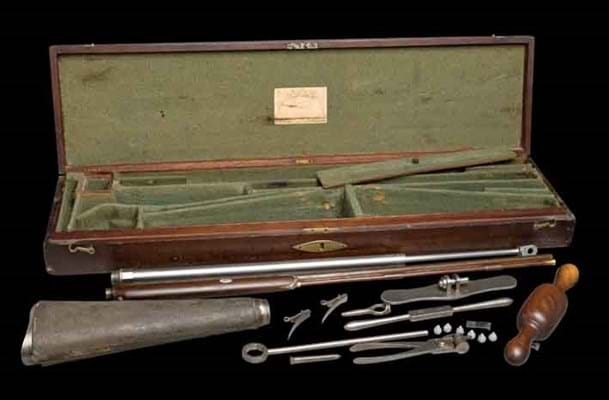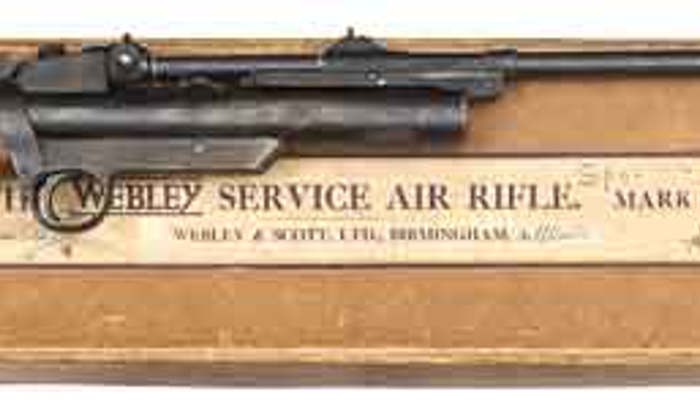Recent sales have produced some rare early air weapons as well as some exceptional examples of the common or garden variety which are becoming increasingly collectable.
Efficient air rifles with a remarkably high rate of fire were manufactured from the 17th century onwards but they were relatively complex weapons requiring skilful handling and they were never produced in huge numbers.
Any early air-powered weapon in good condition will be of interest to collectors but Thomas Del Mar's sale on June 27 included something exceptional in the form of a rare combination weapon made c.1800 by Samuel Henry Staudenmayer, a former workman for the famous John Manton who went on to make guns for Royal patrons in his own right.
The example in this sale was a complete sporting ensemble with two barrels, a rifle in 40-bore and a shot barrel in 32-bore. It came in a fully fitted case with accessories including the all-important air pump and two rayskin-covered steel stocks/air reservoirs. Estimated at £5000-7000, this rare survival sold for £12,000.
Mark II
At the other end of the scale are the pre-Second and First World War air rifles that typically sell for around £100. There are rarities of course, but there is also demand for good examples of the more popular models like the Webley Mark II spring action rifle which was first introduced in 1929 and discontinued in 1946.
The Mark II, known as the Service Air Rifle because of its use in military training, had a break-action barrel with a superimposed bolt-action locking device at the breech.
Two notable examples came up in the summer's sales.
At Holt's on June 21 a .177 calibre Mark II of c.1937, fitted with conventional open sights and a peep sight, reached £480, but the really exceptional Webley was to be found at Wallis & Wallis of Lewes on June 12.
Here the centre of attention was a final type Service Air Rifle in .25 calibre with a push-button barrel release, no safety catch and a central aperture sight. It was in clean condition with much of its original blued finish, but just as important it came with its original cardboard box, labelled and marked by hand with the calibre, the serial number and the words Special M.
The original non-rust paper was still in the box and a real bonus was a cardboard packet of 500 Webley .25 special pellets. The packaging was not perfect, but good enough for a UK buyer to bid £1250.








